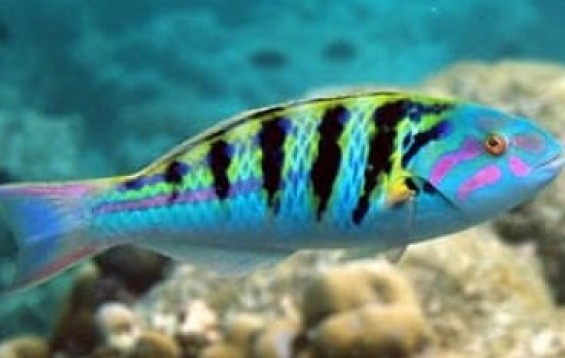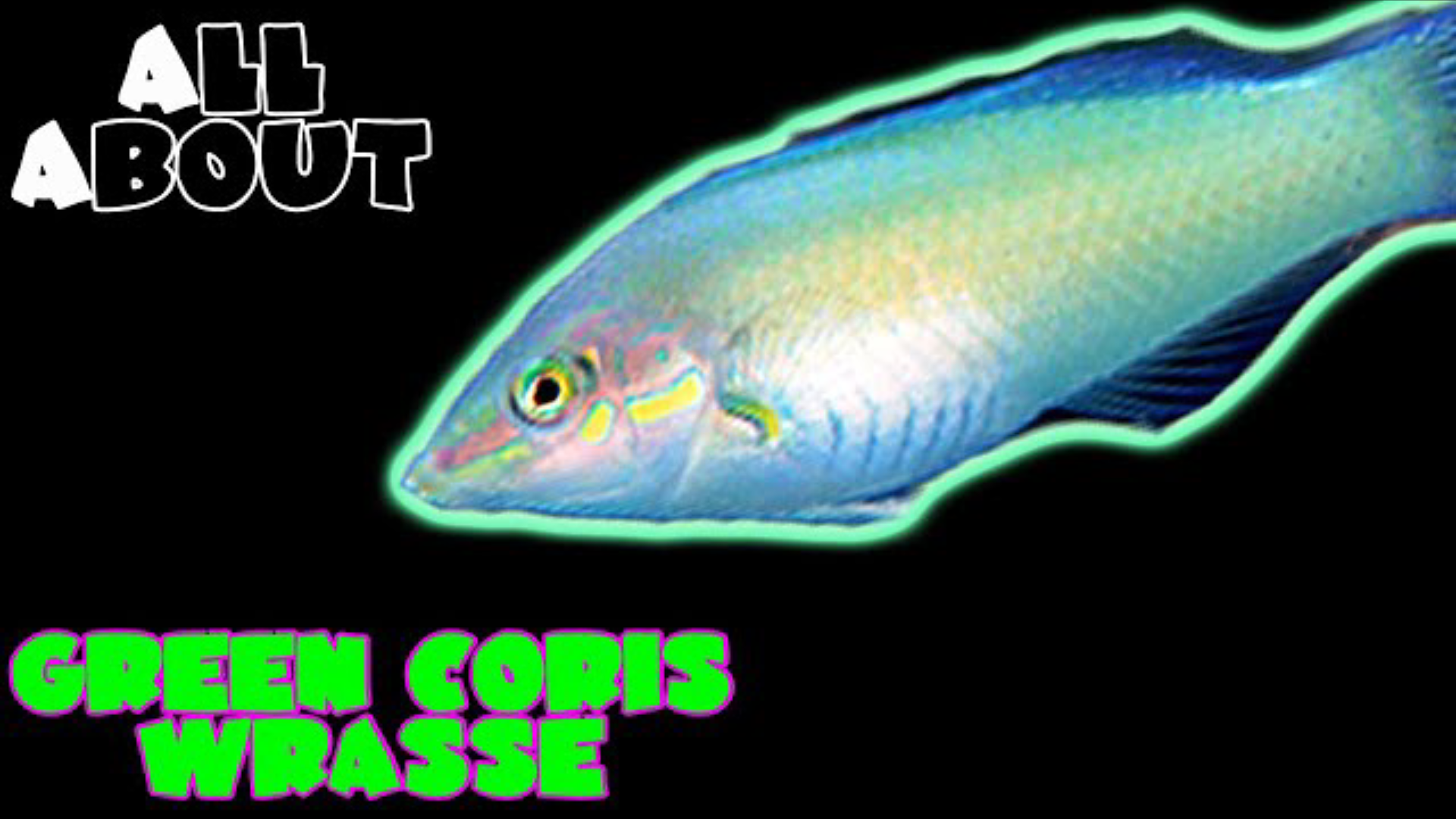- Name:
Hardwicke Wrasse
(View AKA's) - Family: Labridae
- Species: Wrasse
- Scientific Name: Thalassoma hardwicke


More Details
General info about Hardwicke Wrasse
The Hardwicke Wrasse as an adult, it has a pastel blue body with six, vertical dark body stripes and a distinct daisy print around the eyes made of a few different pastel colors. It should reside in an aquarium with larger, aggressive tank mates, and plenty of rocks for hiding. It will become territorial and harass any new additions to the community, therefore, it should be added last to the aquarium. It may be kept with a mate if the aquarium is 125 gallons or larger. It may eat mantis shrimp and bristleworms. It does not eat corals or live plants.
Caution with Hardwicke Wrasse
Wrasse are considered jumpers make sure your aquarium has a tight-fitting canopy or screen cover to prevent the Wrasse from jumping out of your aquarium. Wrasse have been known to jump through the smallest of holes in a canopy.
Wrasses prefer to have a 2" (5cm) sandbed to allow them to burrow into the sand to sleep or when they feel like they are in danger. Some people with bare bottom tanks have also added a Tupperware with a 2" deep sand bed to accommodate the wrasse's needs.
They are generally peaceful but may display aggression towards members of the same species.
Relevent Articles
Original Detail
| Name | Species | Family | Scientific Name | More Detail | Added by |
|---|---|---|---|---|---|
| Hardwicke Wrasse | Wrasse | Labridae | Thalassoma hardwicke | The Hardwicke Wrasse as an adult, it has a pastel blue body with six, vertical dark body stripes and a distinct daisy print around the eyes made of a few different pastel colors. It should reside in an aquarium with larger, aggressive tank mates, and plenty of rocks for hiding. It will become territorial and harass any new additions to the community, therefore, it should be added last to the aquarium. It may be kept with a mate if the aquarium is 125 gallons or larger. It may eat mantis shrimp and bristleworms. It does not eat corals or live plants. | PalaciosAn |
Changed by users
| Submitted Date | Submitted By | Status | Action |
|---|


